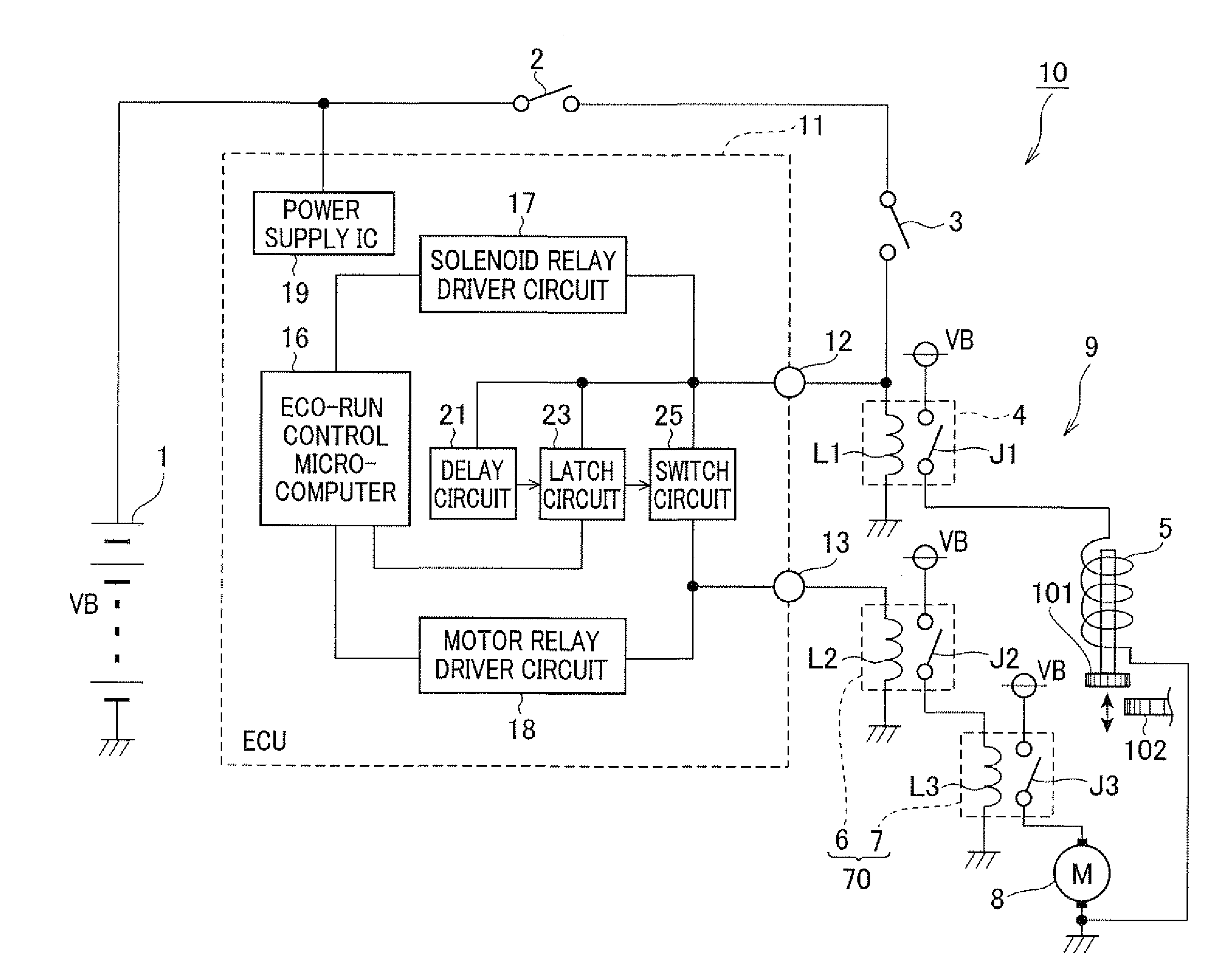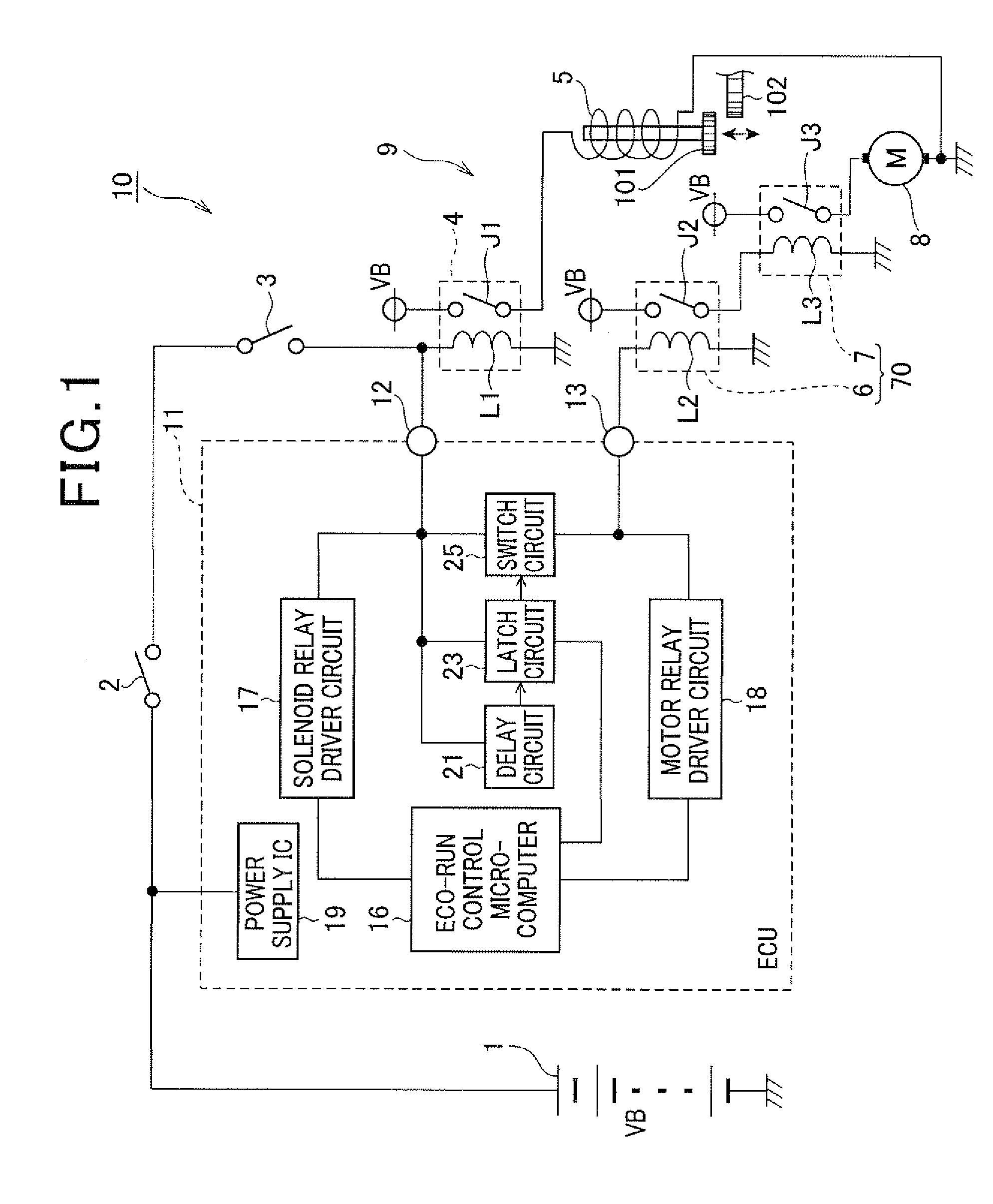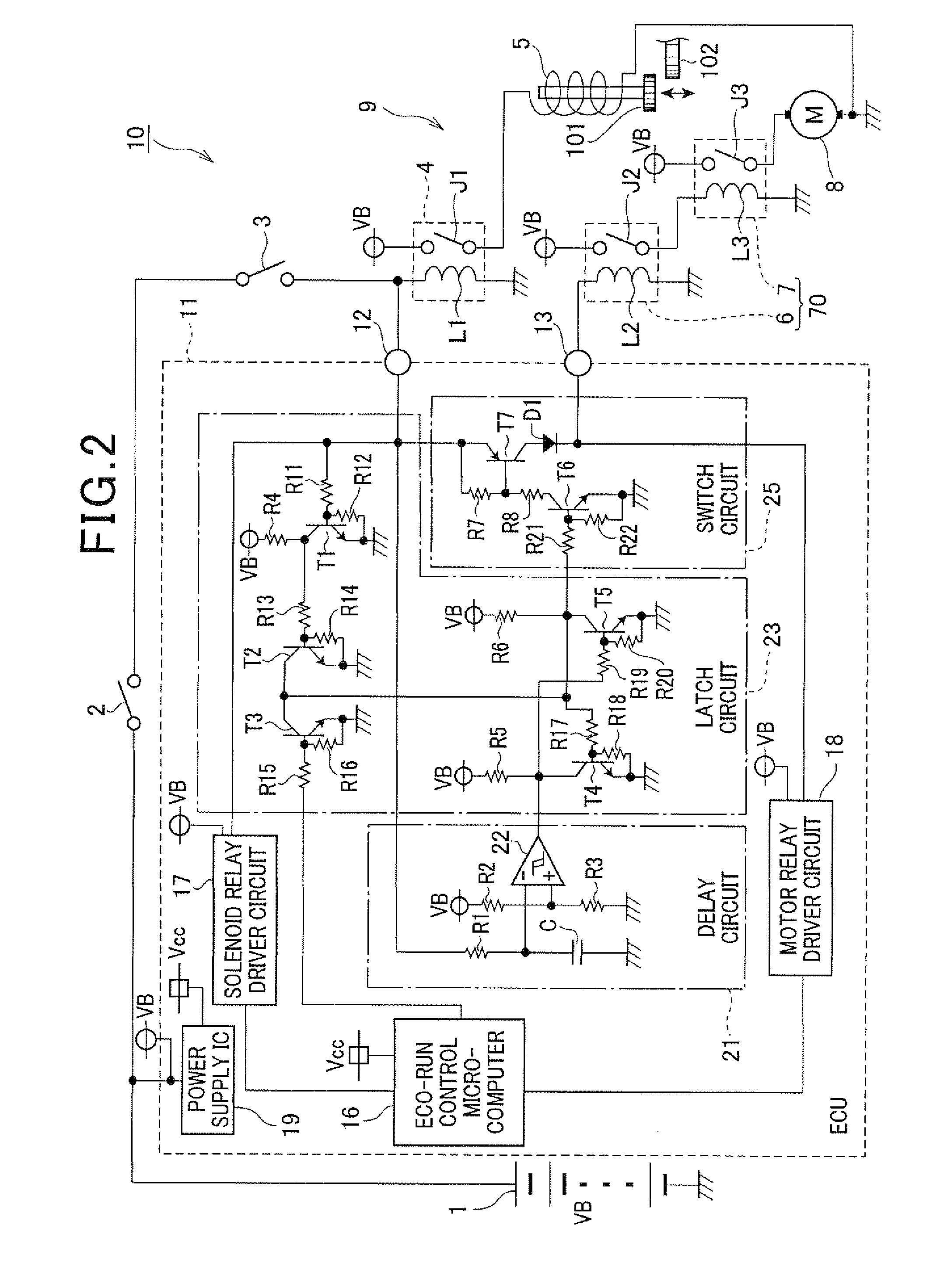Engine starting apparatus
a technology for starting apparatuses and engines, applied in the direction of engine starters, electric devices, machines/engines, etc., can solve the problems of uncontrollable relays of starters, microcomputer resets, and drop in vehicle battery voltage, and achieve the effect of low cos
- Summary
- Abstract
- Description
- Claims
- Application Information
AI Technical Summary
Benefits of technology
Problems solved by technology
Method used
Image
Examples
first embodiment
[0031]FIG. 1 is a block diagram schematically showing the structure of an engine starting apparatus 10 according to a first embodiment of the invention. The engine starting apparatus 10, which is mounted on a vehicle to control starting of a vehicle engine, includes a battery 1, a starter 9 which operates on electric power supplied from the battery 1, and an ECU 11 for controlling the operation of the starter 9.
[0032]The battery 1 is mounted on the vehicle for supplying electric power to various components in the vehicle including the starter 9 and the ECU 11. In this embodiment, the rated terminal voltage of the battery 1 (referred to as the battery voltage VB hereinafter) is 12 V.
[0033]The starter 9 includes a pinion 101, a pinion-engagement controlling solenoid 5, a solenoid relay 4, a starter motor 8, a first motor relay 7 and a second motor relay 6. The pinion 101 is configured to engage with a ring gear 102 formed in the outer periphery of a flywheel disposed at an end of a cr...
second embodiment
[0132]Next, an engine starting apparatus 30 according to a second embodiment of the invention is described with reference to FIG. 5. In FIG. 5, the reference numerals and characters identical to those in FIG. 1 represent the same elements.
[0133]As shown in FIG. 5, the engine starting apparatus 30 includes a push switch 34 which is operated by the user of the vehicle to start the engine. This push switch 34 is connected to a push switch signal input terminal 32 of an ECU 31.
[0134]The ECU 31 includes a start control microcomputer 35, a starting circuit 36, and a start signal output terminal 33. The start control microcomputer 35 controls the starting circuit 36 depending on the operation state of the push switch 34 to output a start signal to the solenoid relay 4 through the start signal output terminal 33.
[0135]The engine starting apparatus 30, which is able to implement the so-called push start system, is configured such that when the push switch 34 is pushed on while the user press...
third embodiment
[0140]Next, an engine starting apparatus 40 according to a third embodiment of the invention is described with reference to FIG. 6. in FIG. 6, the reference numerals and characters identical to those in FIG. 1 represent the same elements.
[0141]As shown in FIG. 6, in this embodiment, a diode D2 is provided between the neutral switch 3 and the solenoid relay 4. In more detail, the diode D2 is connected to the neutral switch 3 and a battery voltage input terminal 42 of an ECU 41 at its anode, and connected to the solenoid relay 4 and the solenoid relay driving terminal 12 of the ECU 41 at its cathode.
[0142]The ECU 41 has a structure similar to that of the ECU 11 of the first embodiment. However, the ECU 41 differs from the ECU 11 in the following points. In the ECU 41 of this embodiment, the solenoid relay driving terminal 12 is not connected to any of the switch circuit 25, delay circuit 21 and latch circuit 23. Accordingly, the drive signal outputted from the solenoid relay driver ci...
PUM
 Login to View More
Login to View More Abstract
Description
Claims
Application Information
 Login to View More
Login to View More - R&D
- Intellectual Property
- Life Sciences
- Materials
- Tech Scout
- Unparalleled Data Quality
- Higher Quality Content
- 60% Fewer Hallucinations
Browse by: Latest US Patents, China's latest patents, Technical Efficacy Thesaurus, Application Domain, Technology Topic, Popular Technical Reports.
© 2025 PatSnap. All rights reserved.Legal|Privacy policy|Modern Slavery Act Transparency Statement|Sitemap|About US| Contact US: help@patsnap.com



